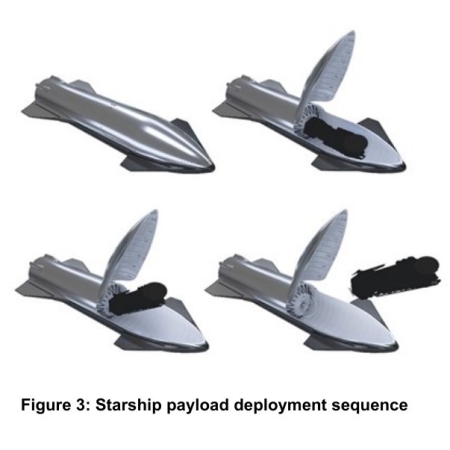Virgin Orbit completes capture-carry test of LauncherOne
Capitalism in space: Virgin Orbit yesterday completed the first capture-carry test of LauncherOne with it attached to the company’s 747 loaded with cryogenic materials.
In previous flight tests, the booster’s tanks were filled with water, which is much warmer than LOX.
For this cryogenic test, Virgin Orbit substituted liquid nitrogen for the LOX as a safety precaution. “So, for this end-to-end rehearsal, we’ll have liquid nitrogen — which is very similar in temperature to liquid oxygen, but which would pose less of a risk in case anything were to go wrong despite all of our planning — in our LOX tanks for both stages,” Virgin Orbit wrote in a mission update.
They say this was their last test prior to LauncherOne’s maiden flight. They have not yet set a date for that flight.
This maiden flight was first supposed to happen in 2018, but in that year development of this rocket slowed to a snail’s pace, probably because they had lost a major launch contract.
The contract award only two days ago from the Space Force will likely reinvigorate Virgin Orbit.
My 2016 prediction that Virgin Orbit would make its first operational flight before Virgin Galactic, even though Virgin Galactic had been started development of SpaceShipOne more than a decade earlier, is still holding. The race now appears to be neck-in-neck, as Virgin Galactic claims it will do operational flights this year. We shall see.
Capitalism in space: Virgin Orbit yesterday completed the first capture-carry test of LauncherOne with it attached to the company’s 747 loaded with cryogenic materials.
In previous flight tests, the booster’s tanks were filled with water, which is much warmer than LOX.
For this cryogenic test, Virgin Orbit substituted liquid nitrogen for the LOX as a safety precaution. “So, for this end-to-end rehearsal, we’ll have liquid nitrogen — which is very similar in temperature to liquid oxygen, but which would pose less of a risk in case anything were to go wrong despite all of our planning — in our LOX tanks for both stages,” Virgin Orbit wrote in a mission update.
They say this was their last test prior to LauncherOne’s maiden flight. They have not yet set a date for that flight.
This maiden flight was first supposed to happen in 2018, but in that year development of this rocket slowed to a snail’s pace, probably because they had lost a major launch contract.
The contract award only two days ago from the Space Force will likely reinvigorate Virgin Orbit.
My 2016 prediction that Virgin Orbit would make its first operational flight before Virgin Galactic, even though Virgin Galactic had been started development of SpaceShipOne more than a decade earlier, is still holding. The race now appears to be neck-in-neck, as Virgin Galactic claims it will do operational flights this year. We shall see.

